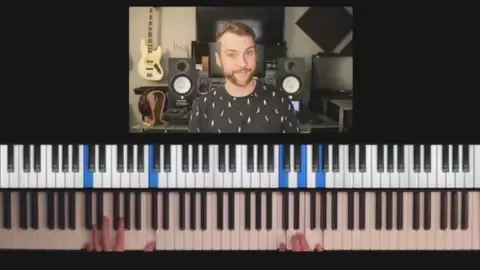Pop Chord Progressions TUTORiAL
P2P | 15 August 2024 | 2.6 GB
Included in this course are over 75 chord progressions that you can apply in your pop progressions, and they even work in other styles like rock, ballads, jazz and many more!
The journey into harmony can be both exciting and challenging. That’s why I wanted to focus on breaking down this subject in a way that could quickly be understood and applied.
However, to get the most out of this course it’s recommended that you first take the 101 and 201 Chords and Chord Progressions courses that I offer. This way you can instill the basics before hitting the ground running with this application focused course.
Harmony is often taught in a way that focuses on the end of progressions. For example, does the progression end with a V-I (perfect cadence) or a IV-I (plagal cadence)? Well, just like writing a good speech, you’ll need to have a strong finish, but starting things on the right foot is also super important. There are plenty of resources online that can teach you the more traditional approach of focusing on the end of progressions, which is why I wanted to take a different angle in the approach to this course. While still putting some focus on the ending of progressions, this course focuses on getting you familiar with the chord movement that starts a progression, as a way of deepening your understanding of harmony by approaching it from various angles. After all, if you’re confident with how you start your progression AND how you end them, then you’ll be an unstoppable force as a performer and composer!
As a performer, it’s ideal to have a good understanding of your chord progressions so that you’re memorizing your material from a fundemental understanding of the song rather than simply memorizing a bunch of shapes on your instrument. Understanding the harmony of the song you know will also allow you to transpose them into various keys, so if your singer isn’t able to hit the high notes one day, then you can easily shift the song down to accommodate as needed.
As a composer, understanding harmony is even more important as it will tell you when you’re following conventional rules and when you’re breaking them. There’s nothing wrong with breaking the rules and going outside of the realm of traditional theory, but knowing WHEN you’re breaking those rules will help you better understand how your compositions will impact your audience.
So, I hope your brain is hungry, because this course offers a lot of food for thought!
Please REPORT Broken Links in the Comment




